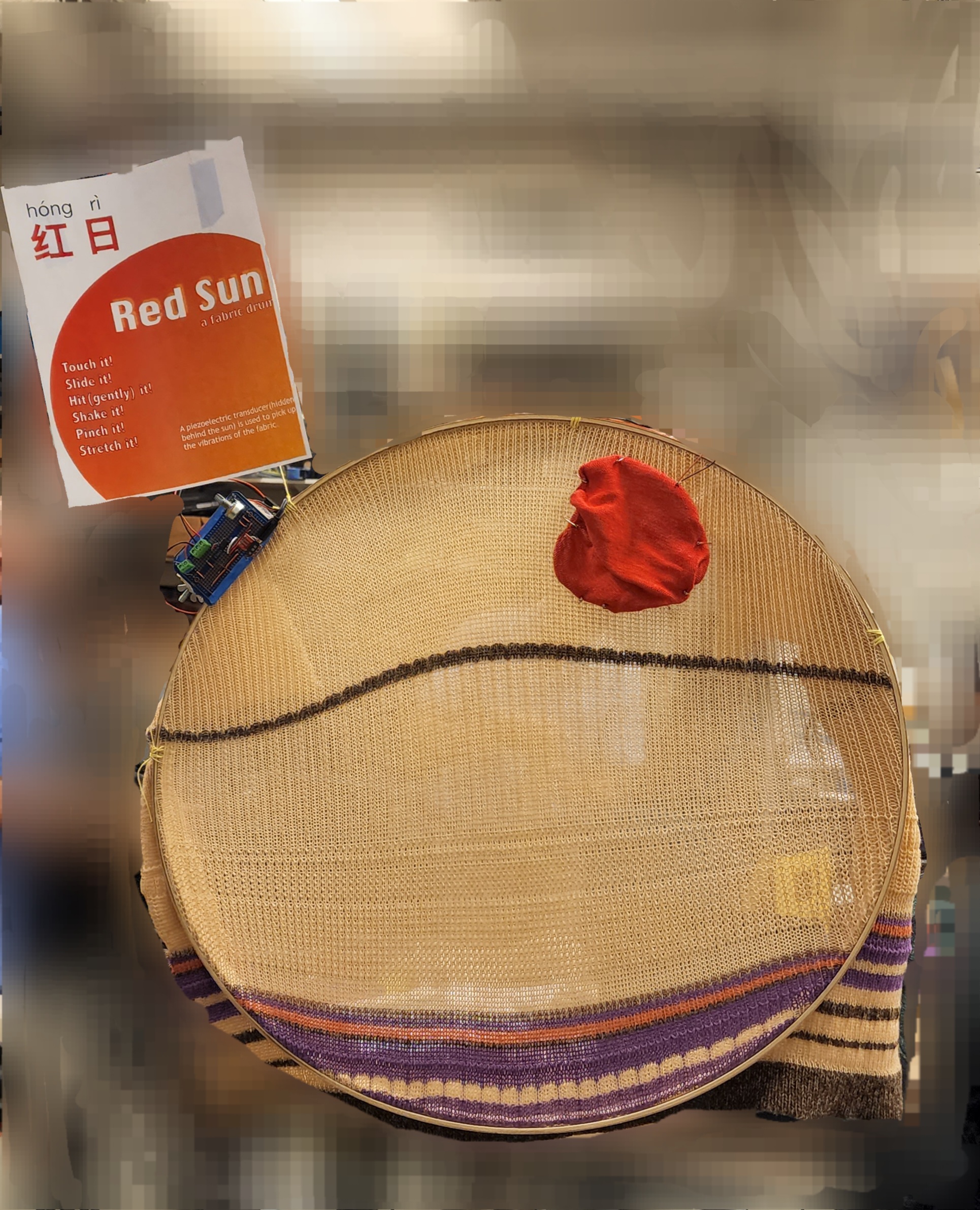As a member of CMU's music and technology mailing list, I received an email regarding a "jam" opportunity. The goal of this jam was to create music using textiles-- whether acoustically or electrically. A key component of a "jam" is collaboration, teamwork, and collective brainstorming. The first day or two of the jam involved imagining and documenting the multitude of ways that we could produce sounds with cloth. A few ideas began to take shape, most involving some form of conductive yarn and analog sensors.
As the week went on, I began testing analog sensors and working on analog oscillator circuits. I once again became well-acquainted with the magical triangles of electrical engineering, op-amps. Using piezoelectric transducers, I was able to fashion a rudimentary one-stringed electric bass. Transducers, in essence, convert one type of energy into another. Piezoelectric sensors are transducers in that they convert vibrations/deformations into an electrical current. A vibrating resistive wire, then, can cause minuscule vibrations in the sensor, and we can measure this vibration electrically. After making a non-fabric instrument, I then turned to the textile experts to figure out how to make cloth vibrate enough for the sensor to detect it. They took over the project from there, creating a massive woven electric drum, as pictured below (background blurred for privacy purposes).

Having handed off the piezo project, I joined forces with another team that was creating a "fabric tape loop." The idea was similar to the magnetic tapes used in the early days of recording and production. Using conductive yarn, we could create a belt with areas of conductivity, and place it on a conveyor-belt-like structure. As the belt ran, the conductive yarn would complete a circuit as it passed a certain point. Harnessing the principles of electromagnetism, we could sense that moving electric current using a handmade inductor. Unfortunately, all brainstorming documentation was destroyed by rogue black printer ink from electronic waste that we stripped for parts. On the final day, before our demonstration, we were able to produce a working prototype of our primitive tape loop.